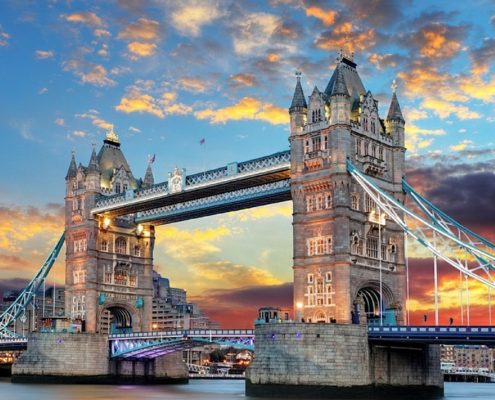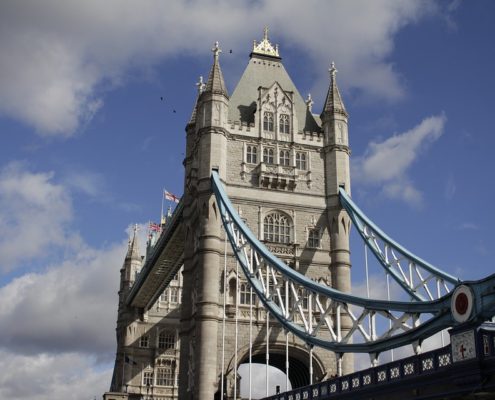A huge challenge faced the City of London Corporation - how to build a bridge downstream from London Bridge without disrupting river traffic activities. To generate ideas, the "Special Bridge or Subway Committee" was formed in 1876, and opened the design for the new crossing to public competition.
Over 50 designs were submitted for consideration, some of which are on display at Tower Bridge Exhibition. It wasn't until October 1884 however, that Horace Jones, the City Architect, in collaboration with John Wolfe Barry, offered the chosen design for Tower Bridge as a solution.
It took eight years, five major contractors and the relentless labour of 432 construction workers each day to build Tower Bridge.
Two massive piers were sunk into the river bed to support the construction and over 11,000 tons of steel provided the framework for the Towers and Walkways. This framework was clad in Cornish granite and Portland stone to protect the underlying steelwork and to give the Bridge a more pleasing appearance.
When it was built, Tower Bridge was the largest and most sophisticated bascule bridge ever completed ("bascule" comes from the French for "see-saw"). These bascules were operated by hydraulics, using steam to power the enormous pumping engines. The energy created was stored in six massive accumulators, as soon as power was required to lift the Bridge, it was always readily available. The accumulators fed the driving engines, which drove the bascules up and down. Despite the complexity of the system, the bascules only took about a minute to raise to their maximum angle of 86 degrees.
Today, the bascules are still operated by hydraulic power, but since 1976 they have been driven by oil and electricity rather than steam. The original pumping engines, accumulators and boilers are now exhibits within Tower Bridge Exhibition’s Engine Rooms.
Information provided in part by: towerbridge.org







